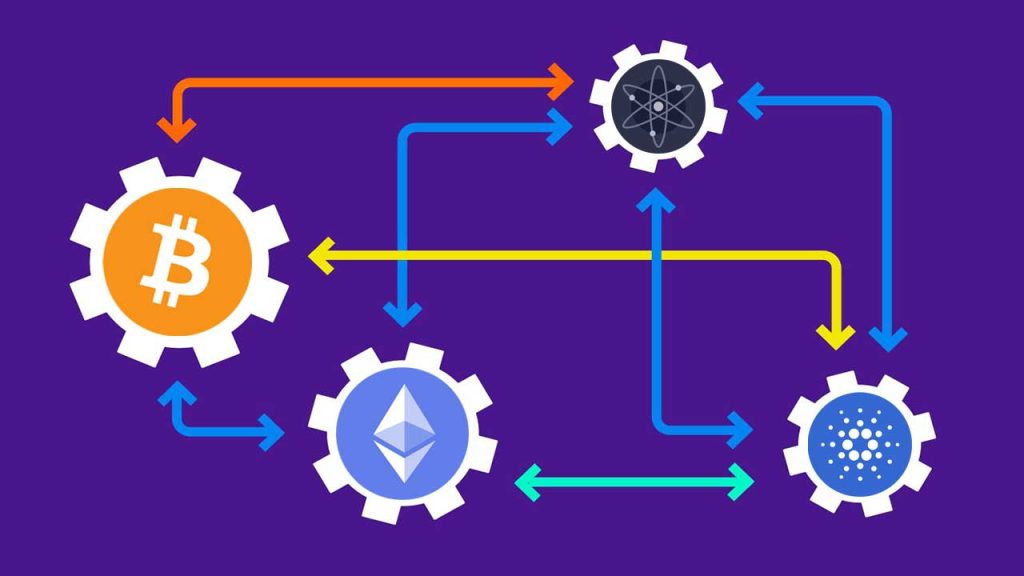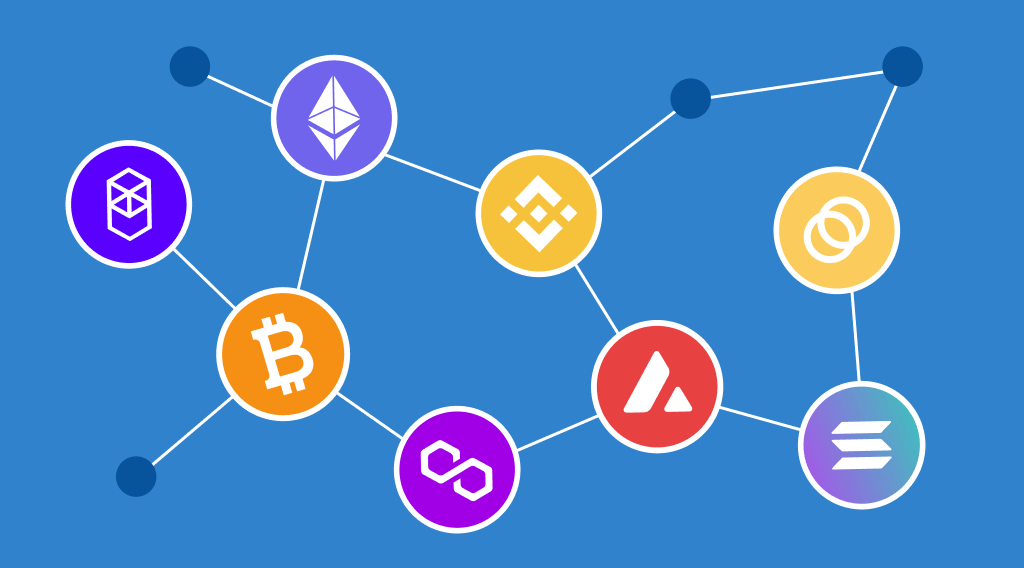The cryptocurrency ecosystem has evolved into a network of independent blockchains, each with its own set of advantages, use cases, and technological foundations. However, one of the biggest hurdles in blockchain adoption has been the inability of these networks to communicate seamlessly with each other. Cross-chain interoperability has emerged as a solution to this problem, enabling blockchains to interact, share data, and transfer assets efficiently. As the industry matures, the future of cross-chain interoperability is shaping up to be one of the most significant advancements in decentralized finance (DeFi) and blockchain technology.
Understanding Cross-Chain Interoperability
Cross-chain interoperability refers to the ability of different blockchain networks to interact with one another, allowing assets, data, and smart contracts to be transferred between chains. Currently, most blockchains operate in isolation, meaning users must rely on intermediaries, such as centralized exchanges, to transfer assets between different ecosystems. This lack of communication creates inefficiencies, limits liquidity, and restricts the full potential of decentralized applications.
A truly interoperable blockchain ecosystem enables seamless transactions between networks, allowing DeFi applications, gaming platforms, and other blockchain-based solutions to access liquidity and functionalities from multiple chains. This advancement is particularly crucial for decentralized finance, where fragmented liquidity across blockchains hinders the efficiency of lending, staking, and trading.
The Importance of Cross-Chain Interoperability
One of the primary benefits of interoperability is enhanced liquidity. In the current state, blockchain networks operate as separate entities with their own liquidity pools. When assets are locked within one chain, they cannot be easily utilized elsewhere. By enabling assets to flow between chains, interoperability ensures that liquidity is maximized, improving capital efficiency across DeFi platforms.
Another major advantage is the reduction of transaction costs. High gas fees, particularly on networks like Ethereum, have been a persistent issue for crypto users. With interoperability, users can execute transactions on lower-fee blockchains while still benefiting from the security and decentralized nature of major networks.
Security is another critical factor. At present, users often transfer assets between blockchains via centralized exchanges, which introduces counterparty risk. A robust cross-chain infrastructure eliminates the need for third parties, allowing for more secure and trustless transactions.
Additionally, interoperability allows for more sophisticated decentralized applications. DeFi platforms, NFT marketplaces, and blockchain-based games can leverage functionalities from multiple chains, creating a richer and more seamless user experience. This multi-chain approach unlocks new possibilities for developers and users alike, reducing reliance on single-chain ecosystems.

How Cross-Chain Technology Works
Cross-chain interoperability is achieved through several mechanisms, each with its own approach to enabling seamless blockchain communication. One of the most common methods is atomic swaps, which allow two parties to trade assets directly between different blockchains without the need for an intermediary. This peer-to-peer exchange is executed through smart contracts that ensure both parties fulfill the agreed-upon conditions before the trade is finalized.
Another widely used approach is wrapped tokens, where assets from one blockchain are represented on another. For example, Wrapped Bitcoin (WBTC) is an ERC-20 token pegged to the value of Bitcoin, allowing BTC to be utilized within the Ethereum ecosystem. This method bridges liquidity between otherwise incompatible blockchains.
Cross-chain bridges serve as another essential component of interoperability. These bridges act as connectors between blockchains, facilitating the transfer of assets and data. Notable examples include the Avalanche Bridge, which allows users to move assets between Avalanche and Ethereum, and Binance Smart Chain Bridge, which connects Binance Smart Chain (BSC) to other networks.
A more advanced approach to interoperability comes in the form of Layer-0 protocols like Polkadot and Cosmos. Unlike Layer-1 blockchains, which operate independently, Layer-0 solutions are designed from the ground up to facilitate interoperability. Polkadot’s Relay Chain enables multiple independent blockchains, known as parachains, to communicate and share security, while Cosmos’ Inter-Blockchain Communication (IBC) protocol allows different blockchains to interact seamlessly. These multi-chain frameworks are setting the foundation for a fully interoperable crypto ecosystem.
Challenges in Achieving Seamless Interoperability
While cross-chain interoperability presents a promising future for crypto, several challenges remain. One of the biggest concerns is security. Many cross-chain solutions rely on smart contracts and bridges, which can be vulnerable to exploits. In recent years, several high-profile hacks have targeted cross-chain bridges, leading to significant financial losses. Strengthening the security of interoperability solutions is a top priority for developers.
Scalability is another issue. As more blockchains integrate cross-chain functionality, the demand on network resources increases. Ensuring that interoperability solutions can scale efficiently without introducing latency or high transaction fees is crucial to maintaining a seamless user experience.
Regulatory uncertainty is also a potential obstacle. With the growing scrutiny of the cryptocurrency industry, cross-chain transactions could face new compliance requirements that may impact their adoption. Without clear guidelines, projects could struggle to navigate the legal complexities of operating across multiple jurisdictions.
Another challenge is standardization. Each blockchain has its own architecture, making it difficult to create universal protocols for interoperability. While efforts are being made to establish industry standards, achieving widespread adoption will require collaboration between different blockchain communities.

The Future of Cross-Chain Interoperability
Looking ahead, several trends are shaping the future of blockchain interoperability. One of the most exciting developments is the integration of artificial intelligence (AI) to enhance cross-chain communication. AI-driven solutions can optimize routing for transactions, predict congestion, and enhance security by identifying potential vulnerabilities in real time.
Another key trend is the rise of institutional adoption. As traditional financial institutions explore blockchain technology, cross-chain solutions will play a crucial role in enabling seamless digital asset transfers across different financial networks. This could accelerate the mainstream acceptance of decentralized finance and blockchain-based payments.
Advancements in Layer-0 and multi-chain frameworks are also driving interoperability forward. Projects like Polkadot, Cosmos, and Avalanche are continuously improving their interoperability solutions, making it easier for developers to build applications that function across multiple blockchains.
Additionally, new security models, such as zero-knowledge proofs (ZKPs) and multi-party computation (MPC), are being developed to enhance the safety of cross-chain transactions. These innovations could significantly reduce the risk of exploits and hacks, making interoperability more secure for users.
How to Capitalize on Cross-Chain Interoperability
For traders and investors, understanding and leveraging cross-chain interoperability can provide a competitive edge in the crypto market. By diversifying assets across multiple networks, traders can access new opportunities and optimize returns while reducing exposure to a single blockchain’s limitations. Interoperability also allows traders to take advantage of lower transaction fees by selecting cost-effective blockchains for their transactions.
To navigate this evolving landscape effectively, staying informed about emerging cross-chain technologies is essential.

Gain an Edge in Crypto Trading with EPIQ Trading Floor
Understanding the intricacies of cross-chain interoperability and applying it to your trading strategies can be a game-changer. At EPIQ Trading Floor, we provide:
- Real-Time Trade Signals: Stay ahead of market trends with data-driven insights.
- Member’s Only Livestreams: Learn directly from expert traders in live sessions.
- Exclusive Mobile App Access: Manage your trades and strategies seamlessly.
- Personalized Coaching: Get tailored trading guidance from experienced professionals.
Join today and use code “BLOG” at checkout for 10% off your membership. Enjoy a risk-free 3-day trial and cancel anytime within the trial period without being charged.
Conclusion
Cross-chain interoperability is transforming the crypto industry, enabling more efficient, secure, and scalable blockchain interactions. While challenges remain, the continued development of interoperability solutions is paving the way for a more connected and seamless decentralized economy. For traders and investors, understanding and leveraging cross-chain technology can open up new opportunities in the evolving digital asset landscape.
Ready to take your trading knowledge to the next level? Join EPIQ Trading Floor today and unlock the tools you need to succeed in the ever-changing world of cryptocurrency.
Disclaimer: The content provided in this article is for informational purposes only and does not constitute financial advice. Cryptocurrency investments involve significant risks, and you should consult with a financial advisor before making any investment decisions.










Responses